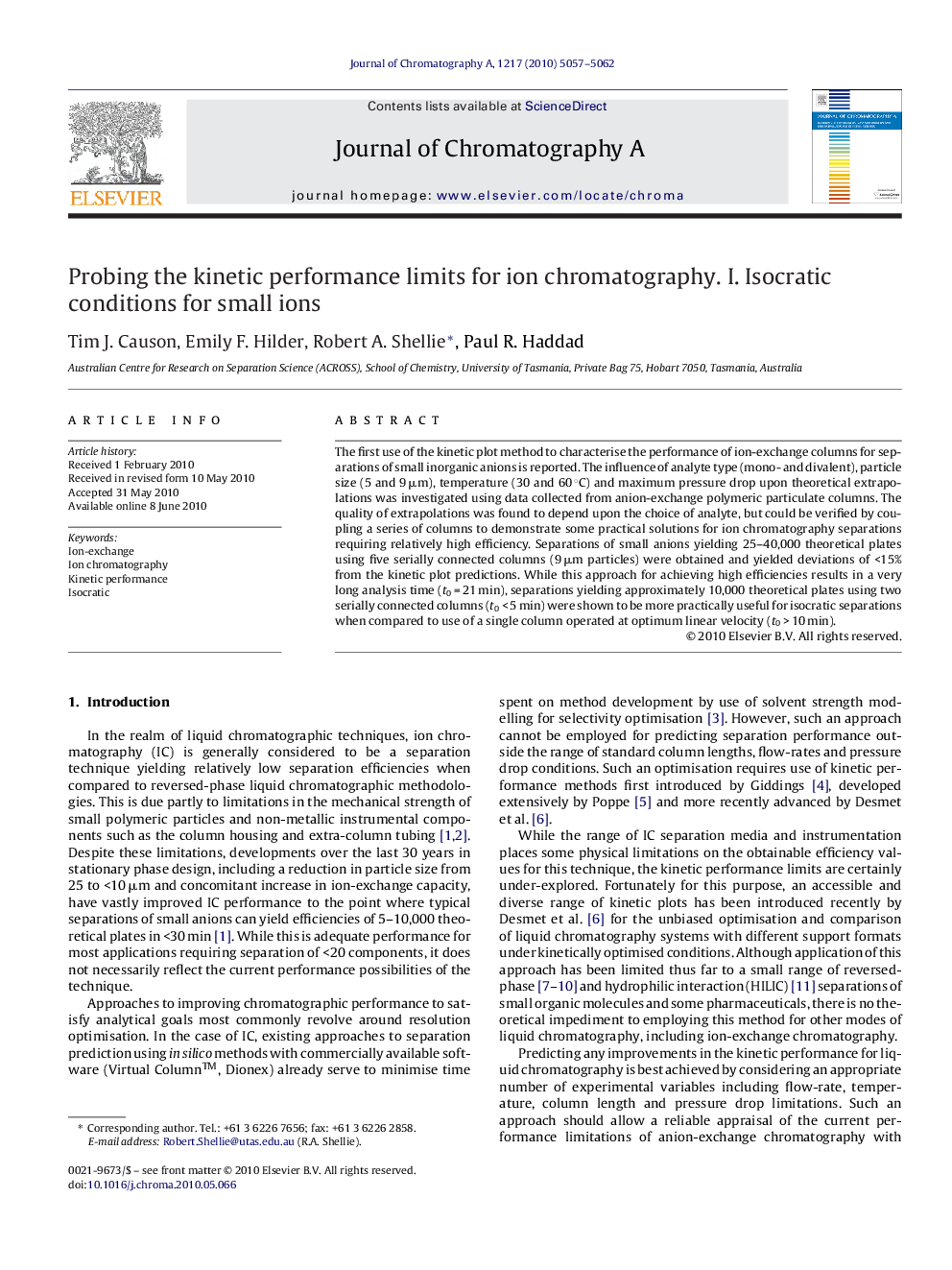| Article ID | Journal | Published Year | Pages | File Type |
|---|---|---|---|---|
| 1205115 | Journal of Chromatography A | 2010 | 6 Pages |
The first use of the kinetic plot method to characterise the performance of ion-exchange columns for separations of small inorganic anions is reported. The influence of analyte type (mono- and divalent), particle size (5 and 9 μm), temperature (30 and 60 °C) and maximum pressure drop upon theoretical extrapolations was investigated using data collected from anion-exchange polymeric particulate columns. The quality of extrapolations was found to depend upon the choice of analyte, but could be verified by coupling a series of columns to demonstrate some practical solutions for ion chromatography separations requiring relatively high efficiency. Separations of small anions yielding 25–40,000 theoretical plates using five serially connected columns (9 μm particles) were obtained and yielded deviations of <15% from the kinetic plot predictions. While this approach for achieving high efficiencies results in a very long analysis time (t0 = 21 min), separations yielding approximately 10,000 theoretical plates using two serially connected columns (t0 < 5 min) were shown to be more practically useful for isocratic separations when compared to use of a single column operated at optimum linear velocity (t0 > 10 min).
